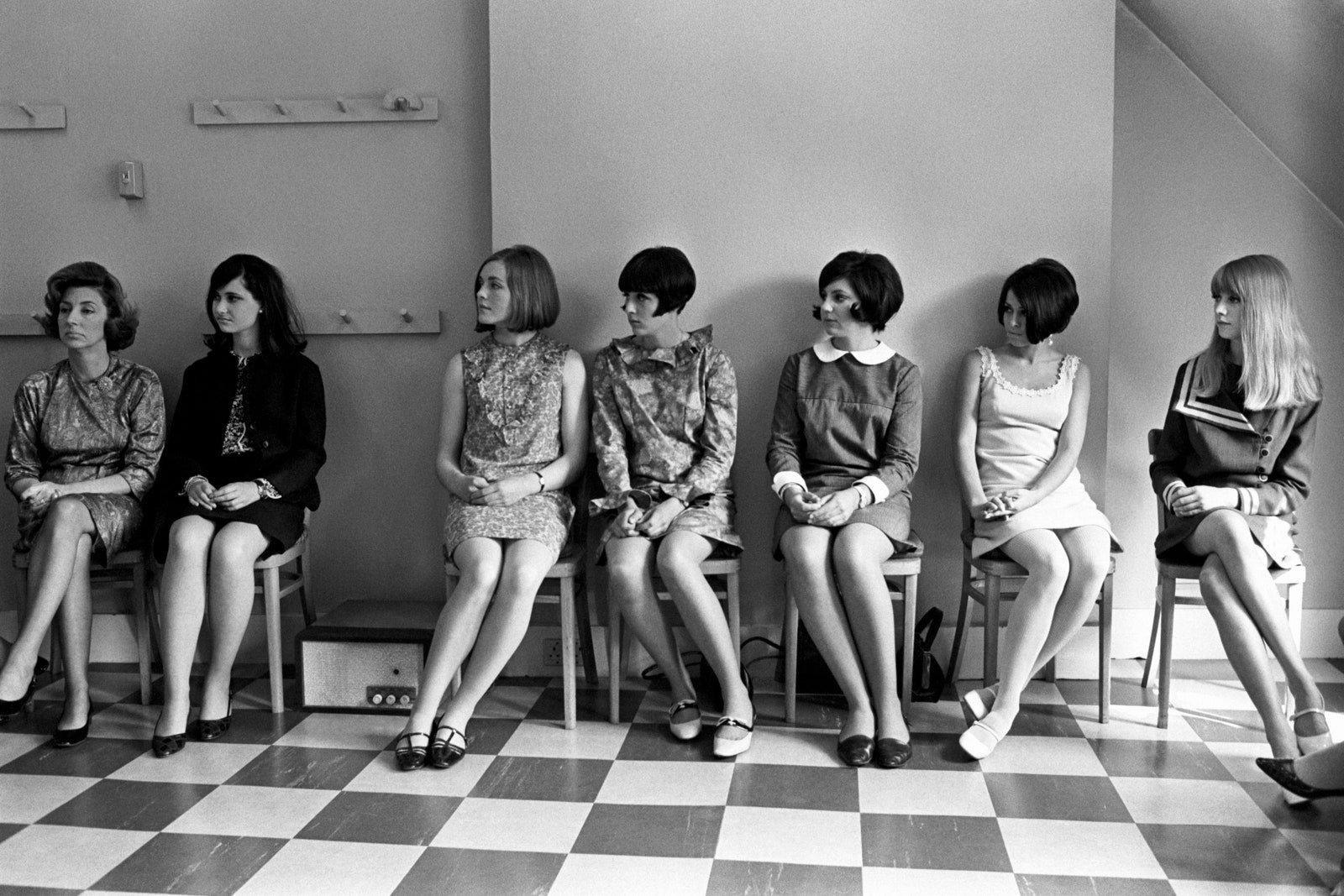Mary Quant
Mary Quant's influence transcended the boundaries of fashion, deeply entrenching itself in the feminist and societal narratives of the 1960s and beyond. Her iconic designs, particularly the miniskirt, symbolized a new era of female empowerment, challenging traditional gender norms and embodying the spirit of the burgeoning feminist movement.
Mario De Biasi / Mondadori / Getty Images
In collaboration with hairstylist Vidal Sassoon, Quant introduced bold haircut styles that echoed the audacity of her fashion designs. These hairstyles, with their clean lines and unisex appeal, broke from traditional gender-specific styles and became symbolic of the 1960s' look. This fusion of fashion and hairstyling represented a departure from conventional femininity, offering fresh perspectives on gender roles and societal norms. Quant's impact on fashion reflected the changing cultural landscape, where women were increasingly asserting their rights and roles. Her designs resonated with the ideals of gender equality and personal expression, aligning with the feminist ideologies of the era. Her work went beyond changing how women dressed; it played a pivotal role in redefining societal perceptions of women.
Photo: Bettmann
Today, the essence of Quant's design philosophy—merging style, functionality, and empowerment—continues to inspire. Her lasting impact is evident in contemporary fashion's ongoing evolution, where challenging gender norms and promoting individuality remain central themes. Mary Quant's legacy is a powerful reminder of fashion's role as a catalyst for societal change and a medium for expressing evolving gender identities and roles. Her contributions stand as a testament to the transformative power of visionary design in shaping cultural and social evolutions. In the realm of fashion, Quant's advocacy for practical yet stylish trousers for women was a radical move that redefined the concept of women's wear. By introducing trousers into the everyday wardrobe of women, she challenged the idea that certain garments were inherently masculine or feminine. This move towards androgynous fashion was a significant step in blurring the gender lines in clothing, offering women more choices and freedom in how they presented themselves. Quant's fashion statements went beyond the mere aesthetics of clothing; they were intertwined with the feminist movement of the time. Her designs symbolized the growing call for women's liberation, autonomy, and the rejection of restrictive societal norms. Her contribution to fashion was a reflection of the wider social changes occurring, where women were challenging the status quo and advocating for greater rights and recognition. Mary Quant's fashion legacy thus remains a profound commentary on the intertwined nature of fashion, gender roles, and societal change.


